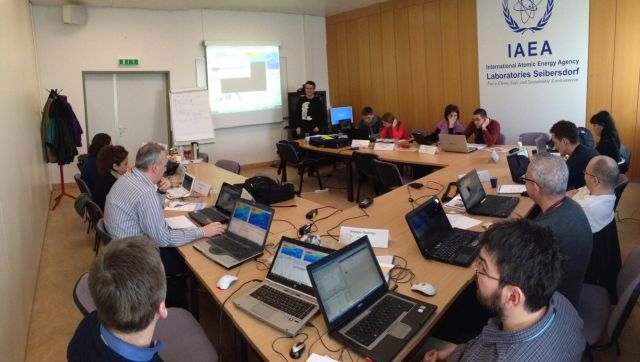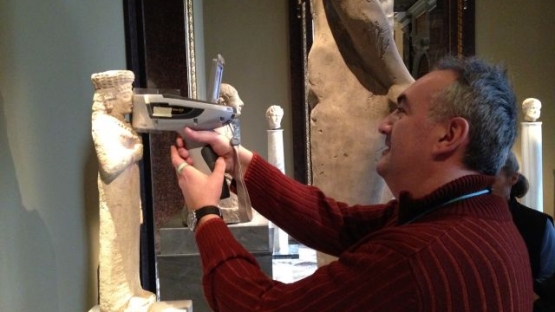ER/0/034 - Enhancing the Characterization, Preservation and Protection of Cultural Heritage Artefacts
"Group Fellowship on Effective Utilization of Nuclear Analytical Techniques (NATs) in the Characterization of Artworks and other Objects from Cultural Heritage", 4 - 15 March, Seibersdorf, Austria.
Preserving Cultural Heritage in Europe: On-the-job Training at the IAEA’s Laboratories
In situ application of a hand-held X-Ray Fluorescence analyser for the non-destructive examination of the traces of polychromy remained on the surface of marble ancient sculptures (Kunst Historisches Museum, Vienna)
Background
Eleven personnel from nine countries of the Europe Region gathered in Seibersdorf, Austria, from the 4th?to the 15th?of March 2013, to participate in an IAEA "Group Fellowship" event that offered them a unique on the job training opportunity in the application of Nuclear Analytical Techniques (NATs) for the characterization of artworks and other objects from Cultural Heritage.
Purpose
The purpose of the "Group Fellowship" was to provide advanced theoretical knowledge, technical and practical experience for the effective utilization of NATs in the characterization of Cultural Heritage objects. The training programme was custom-tailored by IAEA and international specialists to address the specific needs of candidates involved in project RER/0/034, who already had background knowledge and experience in the field.
Activities and Outcome
The Group Fellowship consisted of theoretical lectures, practical demonstrations, and hands-on exercises at the IAEA laboratories, in a museum conservation laboratory in Vienna; trainees also had the opportunity to take part in "virtual measurements" a remote connection to the IAEA beam-line operated at the Ruder Boskowicz Institute in Zagreb, Croatia. Methodological aspects related to the utilization of X-Ray Fluorescence, Synchrotron Radiation-based and Ion-Beam Analysis techniques in support of art and archaeological studies were presented, and special emphasis was given to review the benefits and limitations of portable/handheld XRF instrumentation. Good practices for data analysis and interpretation were also addressed.
This unique training opportunity marked another step towards the sustainable management of cultural heritage artefacts in the Europe Region, contributing to enhanced cultural tourism and accelerated socioeconomic development in the region.

Fellows participating in hands-on practical training with Mr Armando Sole from the European Synchrotron Radiation Facility (ESRF), Grenoble, France.


